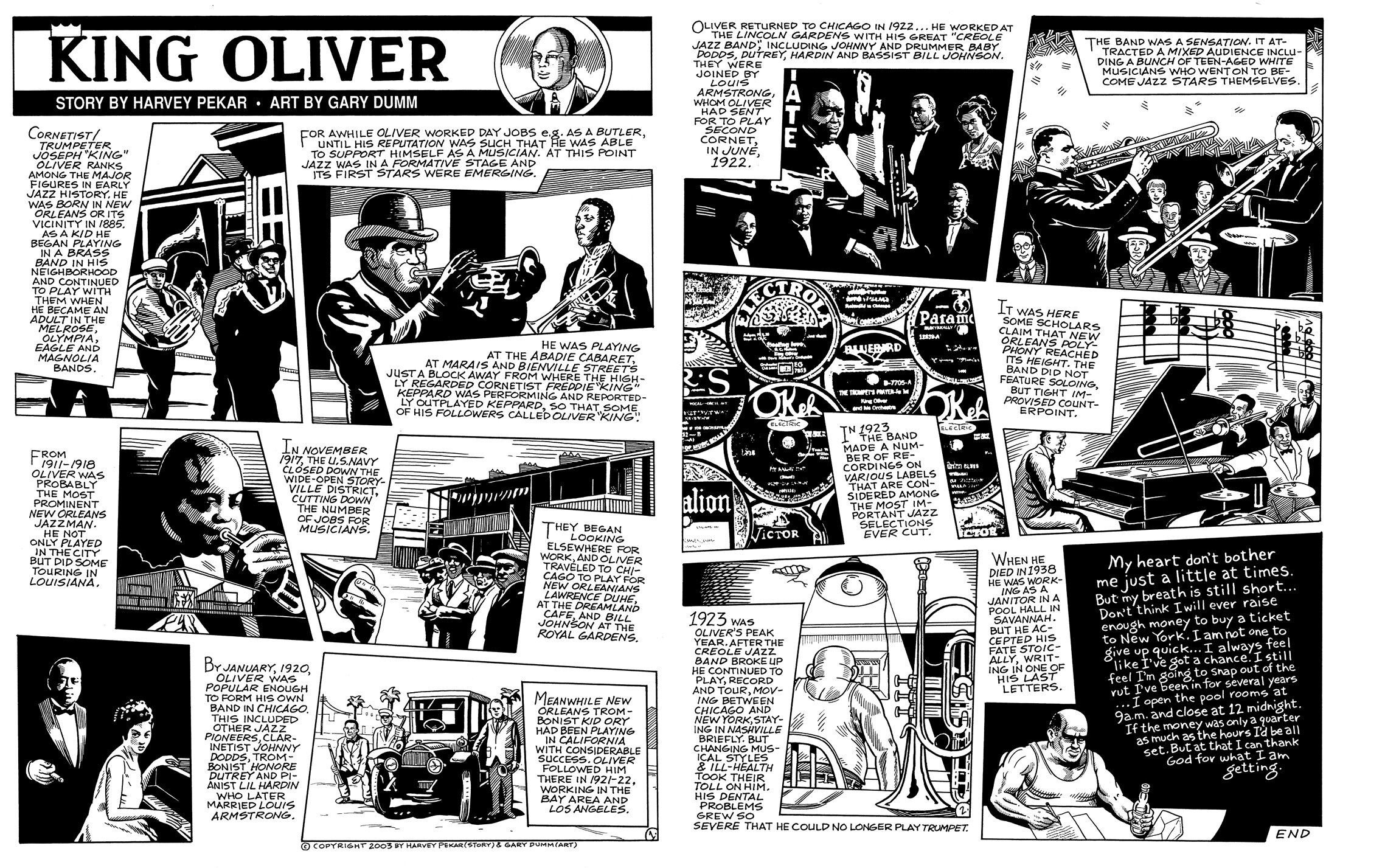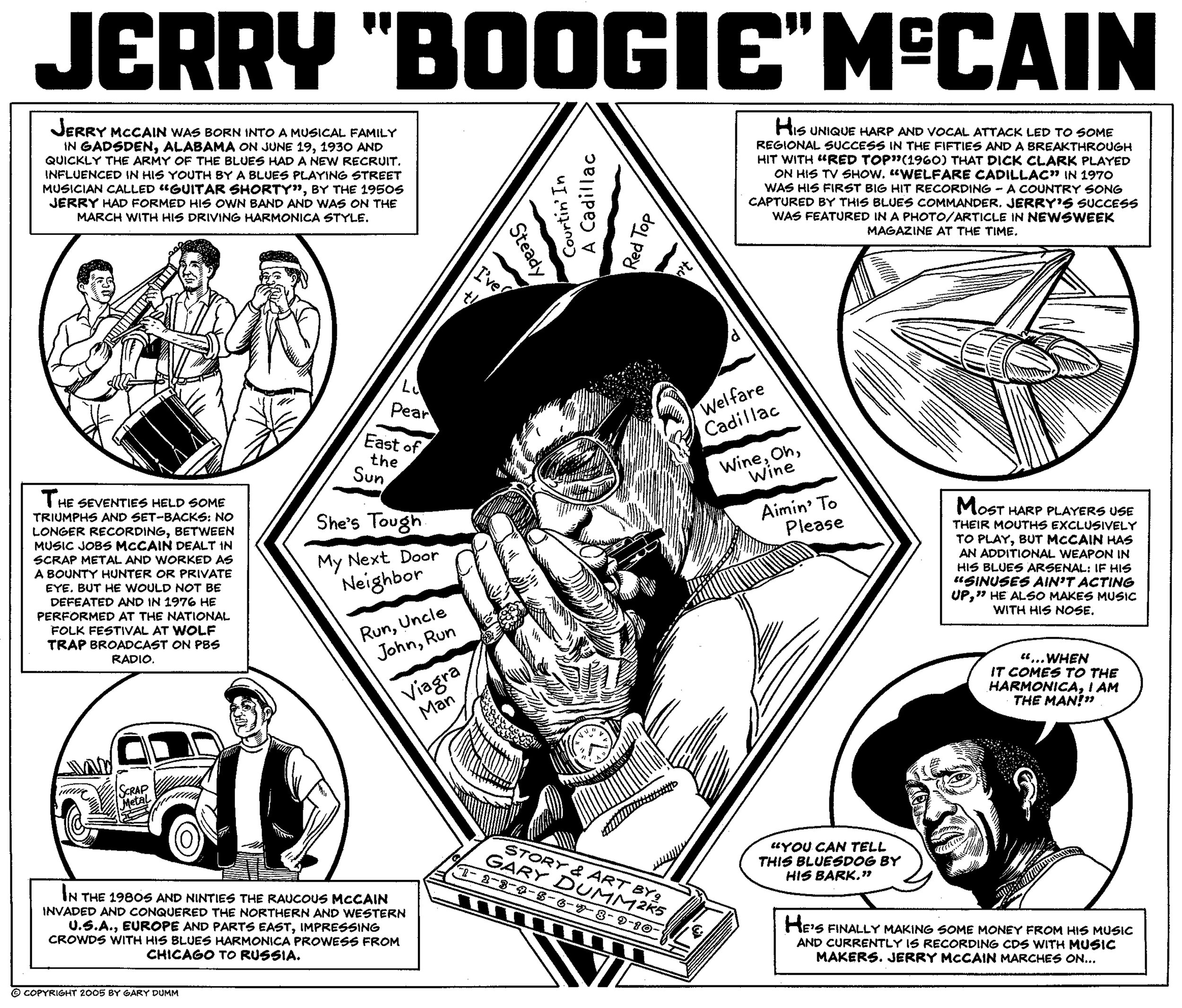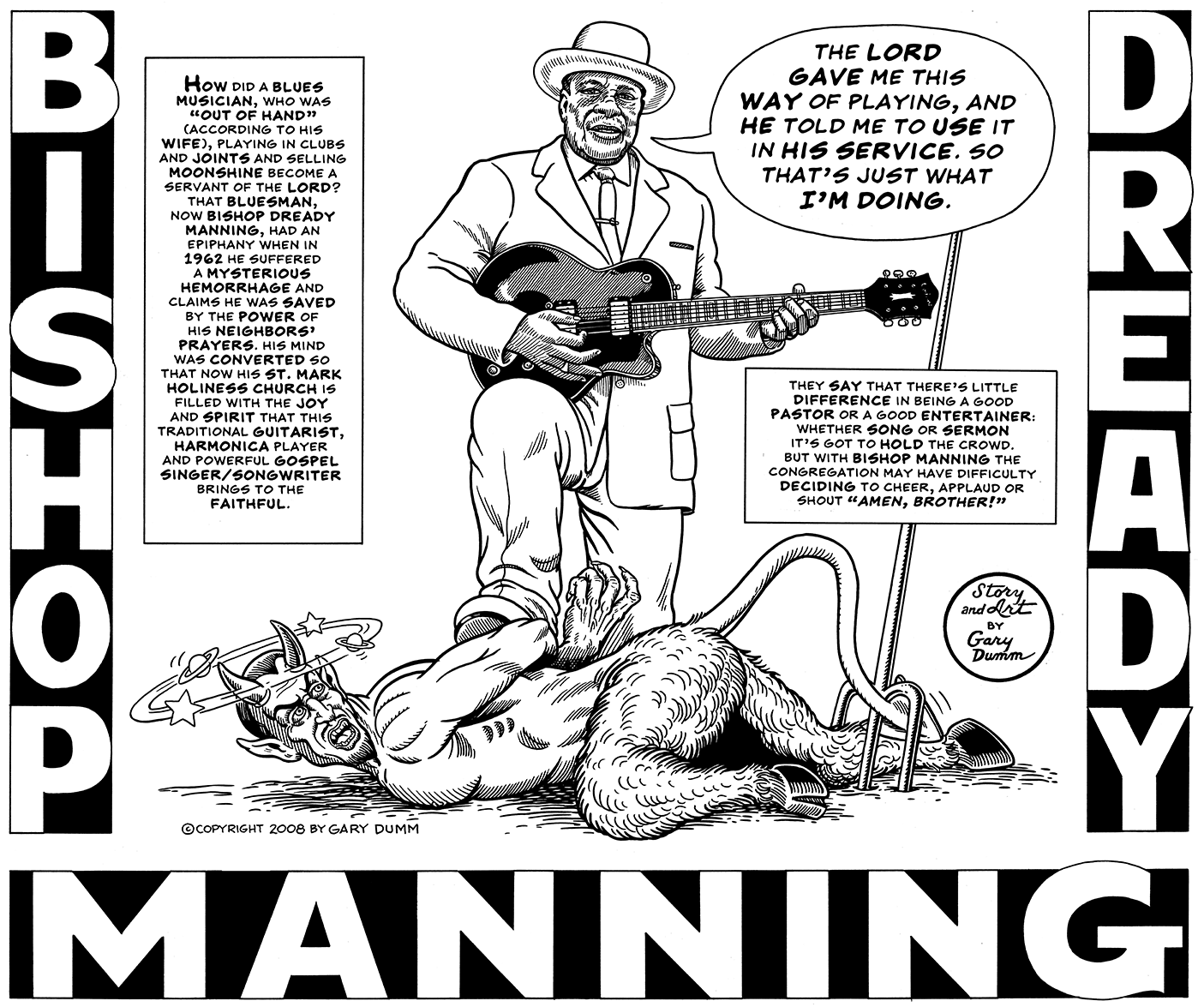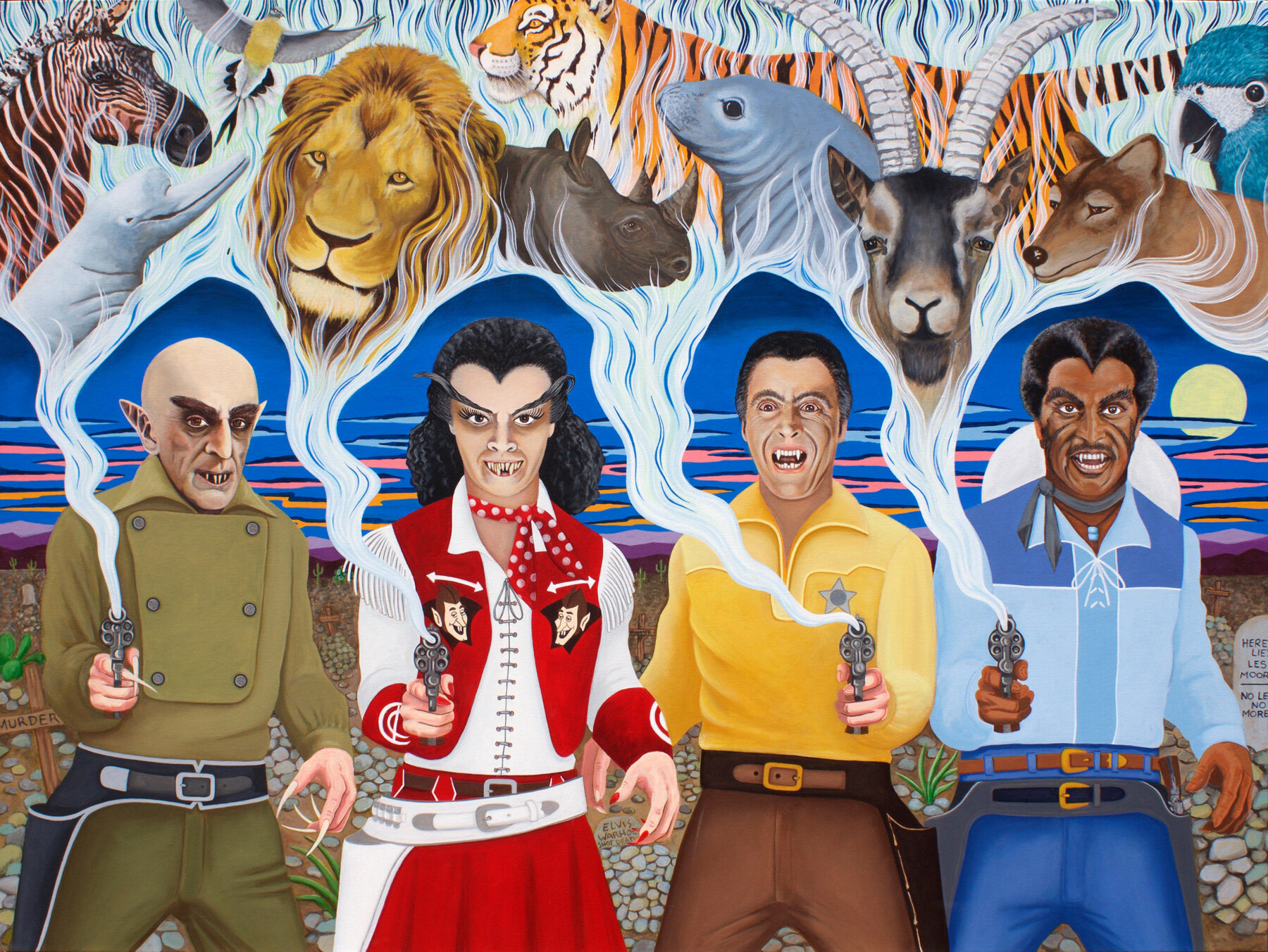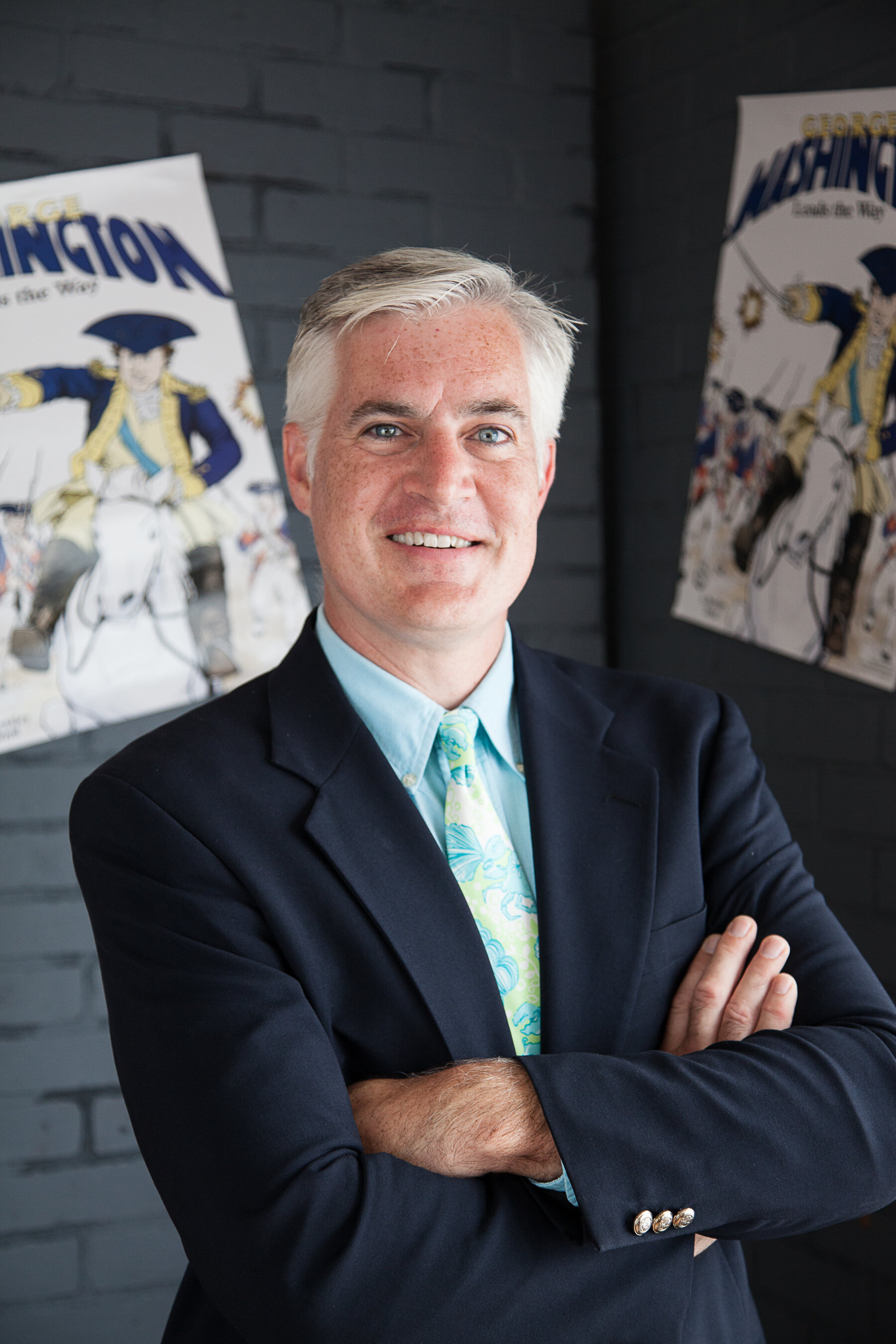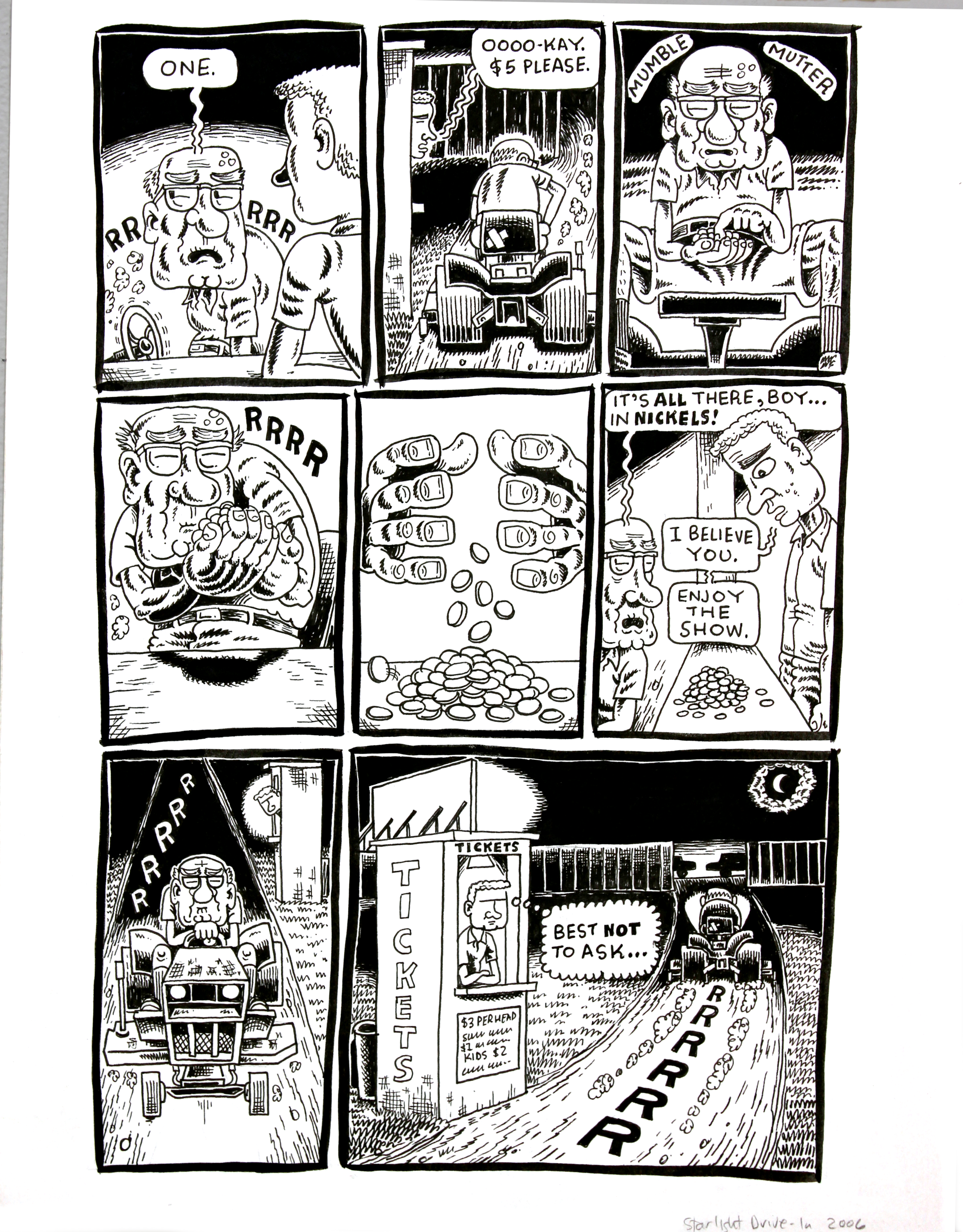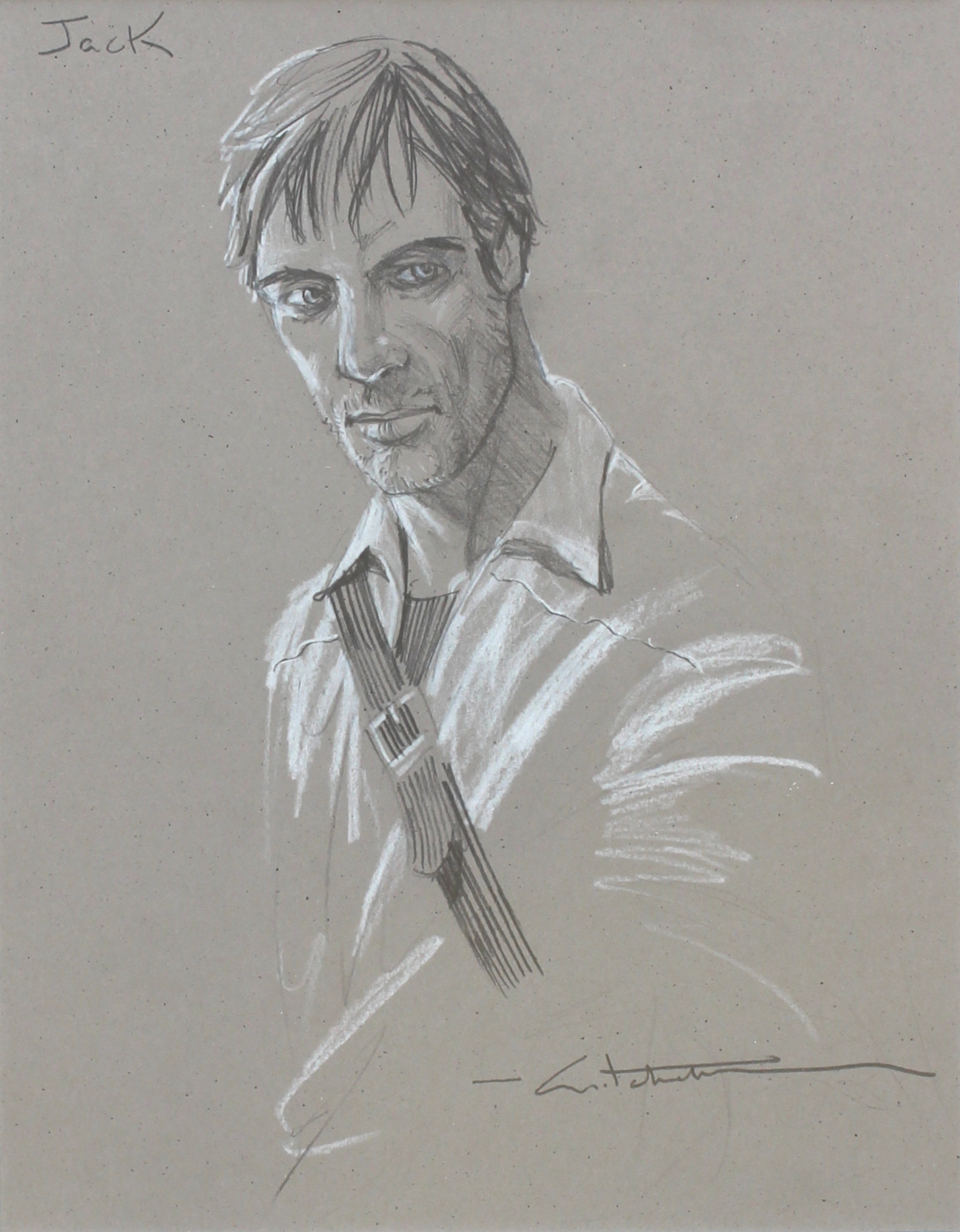More Than A Laughing Matter
October 3rd – November 22nd
Panel Talk: October 24th 2:00PM EST
Gary Dumm, Laura and Gary Dumm | Bentley Boyd | Christian Colbert |
“When you hear the word comics or cartoons you might first think of the strips or panels that appear in the daily newspapers. Indeed, there is a long history of humor and satire via graphics that have appeared in publications. But, since the development of the printing press and movable type, graphic images have also been used to convey moral and religious messages, to speak out on political issues, and to convey the sometimes harsh reality of our lives.
The five Ohioans we are featuring in our exhibition depict superheroes, historical narratives, social and political commentary, and personal narratives. Each brings a particular vision to the ideas that are presented. Graphic arts have the ability to add power to the stories being told, and the graphics (comics art) of Bentley Boyd, Christian Colbert, Gary and Laura Dumm, and Michael Sangiacomo are More Than A Laughing Matter. I hope you will be moved by both the art of the images and the messages conveyed.”
— Reid Wood, Curator
Gary Dumm
Artist Statement:
I have loved cartoons and comics ever since I was a child. My mom taught me to read using comics as well as books. And I learned that I could get attention from other kids in grade school by showing them my drawings. Later, in high school, I found that was also a way to draw attention from girls. The practice of drawing is who I am. Combining words with pictures is a challenging but fun way to make a living. I have worked with a lot of talented writers (but especially Harvey Pekar on “American Splendor” and Scott MacGregor on “Fire On The Water”), who’ve inspired me to hone my craft everyday. Telling a story with art is what I aim to do with every image I’ve created. Presently I am working with my wife Laura on our series of large and colorful environmental and socio-political paintings. But I will forever continue to work on comics in glorious black-and-white.
Gary Dumm, WCSB Barlow etc. Band Poster, ink on Bristol Board, 2014, $500
Gary Dumm, A Cautionary Baseball Tale, ink on Bristol Board, 2000, NFS
Gary Dumm, Last Visit From Daniel, 2-pager, ink on Bristol Board, 2006, $800
Gary Dumm, King Oliver, 2-pager, ink on Bristol Board, 2003 $2,000
Gary Dumm, Snarc #1 - Front Cover, ink on Bristol Board, 2019, NFS
Gary Dumm, All That Jazz, Man!, ink on Bristol Board, 2019, $400.
Gary Dumm, Shoeless Joe Jackson (Unpublished), ink on Bristol Board, 2001, $1,200
Gary Dumm, Jerry “Boogie” McCain, (From Music Makers Rag), ink on Bristol Board, 2005, NFS
Gary Dumm, Cora Mae Bryant, ink on Bristol Board, 2006, NFS
Gary Dumm, Precious Bryant, ink on Bristol Board, 2007, NFS
Gary Dumm, Sam Frazier Junior, ink on Bristol Board, 2003, NFS
Gary Dunn, Bishop Dready Manning (From Music Makers Rag), ink on Bristol Board, 2008, NFS
Gary Dumm, Fire On The Water - Front Cover, ink on Bristol Board,digital color by Laura Dumm, 2020, NFS
Gary Dumm, Fire On The Water - Interior page 161, ink on Bristol Board, 2020, NFS
Gary Dumm, Fire On The Water - Interior page 24, ink on Bristol Board, 2020, NFS
Gary Dumm, Fire On The Water - Interior page 247, ink on Bristol Board, 2020, NFS
Gary Dumm, Fire On The Water - Interior page 63, ink on Bristol Board, 2020, NFS
Gary Dumm, Spike E. Dude - from the “Pretty Uglies” series, ink on Bristol Board, 2011, $400
Gary Dumm, B.L.Z. Bubb - from the “Pretty Uglies” series, ink on Bristol Board, 2011, $500
Gary Dumm, Lovey U. Hartz - from the “Pretty Uglies” series, ink on Bristol Board, 2011, $400
Gary Dumm, Hairy The Hippie - from the “Pretty Uglies” series, ink on Bristol Board, 2011, $500
Laura & Gary Dumm
Environmental Series
Artist Statement:
Ripping relevant issues from the news and putting them onto canvas, the Dumms’ hope their collaborations will start conversations and promote awareness. Their work catches the viewers’ attention with its brightly colored pop surrealism, and inspired themes that ponder the ramifications of society’s actions.
“Color is my first love and nature is my second. My goal is to create paintings that give the eye many places to explore and the brain many things to think about. I thrive on images and or shapes partnered with a bright color palette. One viewer said of my paintings “You cover every inch of that canvas! There is always something new to look at!” — Laura Dumm
CLICK HERE to view Laura’s Bio
“Normally one would expect original pieces in an art show about comics to be rendered in black and white. And that is true for the most part. But the large, painted images are the logical outgrowth of a collaboration between two very different artistic approaches. I am mainly a comic book artist, and my wife Laura is a painter. As a life-long lovers of comics and comics art of all kinds, we like to think of these paintings as large editorial cartoons fully rendered and elaborated upon in paint. Each of these is a single panel “cartoon”, utilizing classic horror movie monsters to represent human activity. And each tells a specific story while simultaneously directing the viewer’s attention to a current concern or problem which looms large in our collective consciousness and our lives.” — Gary Dumm
CLICK HERE to view Laura and Gary's book about their Environmental Series
The Dumms’ environmental paintings are all available as smaller size, quality digital prints at www.dummart.org, and an archive of their other works is viewable at ww.dummart.com.
Laura and Gary Dumm, To Bee Or Not To Be, acrylic on canvas, 2015, SOLD
Laura and Gary Dumm, UpChucky, Breakfast of Cereal Killers, acrylic on canvas, 2017, $3,200
Laura and Gary Dumm, Because We Can, acrylic on canvas, 2017, SOLD
Laura Dumm, How To Grow A Killer Tomato, acrylic on canvas, 2018, $1,500
Laura and Gary Dumm, Old King Coal, acrylic on canvas, 2016, $3,500
Laura and Gary Dumm, Burning In Water, Drowning in Plastic, acrylic on canvas, 2016, $3,500
Laura and Gary Dumm, #Abandon Ye Hope All Who Enter Here, acrylic on canvas, 2017, $5,000
Laura and Gary Dumm, Reef, (Err), Madness, acrylic on canvas, 2017, $3,200
Laura and Gary Dumm, Washed Away In The Digital Reign, acrylic on canvas, 2017, $5,000
Laura and Gary Dumm, Saraband For A Sinking Fantasy Land, acrylic on canvas, 2017, $4,000
Laura and Gary Dumm, Scream Of The Butterflies, acrylic on canvas, 2015, SOLD
Laura and Gary Dumm, Poisoned Water It's A Gas, acrylic on canvas, 2016, $3,000
Laura and Gary Dumm, The Invisible Man Returns (To Fascism), acrylic on canvas, 2016, $8,000
Laura and Gary Dumm, Listen, The Fat Lady Is Singing, acrylic on canvas, 2016, $3,200
Laura and Gary Dumm, Have It Your Way, acrylic on canvas, 2016, $4,000
Laura and Gary Dumm, The Four Horsemen Of Extinction, acrylic on canvas, 2016, $5,000
Gary Dumm, Underwater And Too Late To Bail, ink on Bristol Board ,2016, $800
Gary Dumm, Have It Your Way 1.2, ink on Bristol Board, 2016, SOLD
Gary Dumm, Atomic Apocalyptic Tango, ink on Bristol Board, 2015 $1,000
Gary Dumm, Jekyll-Hyde (Flushed With Pride), ink on Bristol Board, 2016, $800
Bentley Boyd
Artist Statement:
The simplest way to distinguish humans from other mammals on this planet is to say that we humans pass our accumulated knowledge forward to the next generation of humans. I help to do that.
If I write a joke that makes a reader laugh, or draw something they’ve never seen before, wonderful. But every part of my art serves the higher purpose of education. My parents were both professional educators and artists, so that path was plain to me and was encouraged. This is the field I tend: every year there’s a new crop of fifth graders who don’t know much about Sacagawea, or Nat Turner, or James Madison. The more I can pass to them the values and life experiences of earlier generations, the more learned, just, and successful these next generations will be. The measure of my success is not now; it is the society my readers live in 20 years from now.
My medium is the most durable of the visual arts: pen and pencil on paper. It is a democratic medium. Computerized color came in the late 1990s. I don’t animate. I have held the same artistic ground for 25 years (35 if you add my political cartoons), but the environment has shifted around my bastion. I have been blessed to create non-fiction cartoons for so long that my art form has transitioned from misfit to respectable citizen. My medium has changed from all print to mostly digital. But the stories remain the core. Comix are a mix of words and pictures and ideas. Getting the right balance of those is the alchemy of inspiration.
Bentley Boyd, Lucretia Mott sketch, ink on paper, 2018, NFS
The historical research comes first. The next step, a sketch like this one, is not just a chance to try out visuals; it is the first step in editing. How much text will fit? What information am I trying to convey? What can I show instead of tell? This is my version of the storyboards that Hollywood directors use to plan out a movie before they ever go to set. In this one-page life of feminist Lucretia Mott, note the choices of the visual in the second panel, the posture of the man in the fourth panel, and the cartoon anger clouds over the women in the fifth panel.
Bentley Boyd, Lucretia Mott, digital, 2018, NFS
Here is the Lucretia Mott page as submitted to the National Women’s History Museum for their website. What has changed since the sketch? In the balance between words and pictures, the drawing of images with ink on paper is just one stage of my creative process. Computer software allows me to add color and type (my own handwriting is a font in my software). I often make last minute edits; sometimes cutting one word makes a big difference.
Bentley Boyd, Satchel Paige, digital, 2020, NFS
Creating stories for my smartphone app allows me much more space to tell stories. Instead of the seven panels for Lucretia Mott’s biography on a webpage or the 40 panels to tell a story in my printed comix, my smartphone app stories are 80 panels. This is one panel from my story that combines several biographies, most notably Jackie Robinson and Rosa Parks, to describe the beginning of the civil rights movement in the late 1940s and early 1950s.
Bentley Boyd, Twain, digital, 2020, NFS
This is another single panel from a story created for my smartphone app. Using the isolation recommendations of the COVID-19 public health emergency, I created 10 new app stories in the first 19 weeks of quarantine. The quiet time has allowed me space and time to create drawings with more detail than I could do during the five years that I created stories for a Virginia newspaper. I hope that the historic details give readers a better sense of how different the settings of my stories are from the world we live in today. Good storytelling is based on good details.”
Bentley Boyd, What Did Freedom Seekers Find in Oberlin, digital, 2011, NFS
My history of Oberlin is one of the favorite projects I’ve completed in the past 20 years. My work was already well-loved in Virginia, but this was a test of whether it could translate to other communities and other histories. The page by page format is exactly the same as the structure of my Virginia stories, and I think it worked well.
Bentley Boyd, What Has Changed Since Oberlin’s 1830s, digital, 2011, NFS
This page is a great demonstration of what my comix add to historic understanding. It’s almost impossible to juxtapose historic photos of a community with modern parallel images; very few communities have extensive photography earlier than 1900. My work benefits from years of collaboration and study with experts in photography, material culture, and archaeology. I use those details to make pages like this possible. In my work, it’s just as important to get the visuals historically accurate as it is to get the text accurate.
Bentley Boyd, What Was the Northwest Ordinance, digital, 2017, NFS
One of my nerdiest pages ever. This is where the educational purpose of my comix really stands out. I published a biography of Alexander Hamilton in 2017 to catch some of the interest generated by the hit musical, and—as I have for 25 years—I used the flash to add some other core historical information that would have otherwise seemed boring to many modern readers. Hamilton’s work on the Constitution was my doorway to include some Ohio history and an important document that most modern Americans couldn’t describe. Note how most of the page is not narrative but what the modern journalists call an “infographic.” Comix have been infographics for decades!
Michael Sangiacomo’s Collaborations & Collected Works
Artist Statement:
I never set out to be an original art collector simply because I could not afford it. But over the years I have somehow managed to collect a few nice pieces. The first was a gift to me from Brian Michael Bendis, a page he drew for one of his early works, "Goldfish," where he used me as a model. Bendis has since gone on to become a superstar at both Marvel and, more recently, DC, as a writer. I still enjoy Bendis' art the rare instances he has time to draw anything. The others I picked up mainly as gifts from the generous creators.
Bio:
Michael Sangiacomo has been collecting comics his entire life, starting at the age of 5 when his brother, Joe, used to read the adventures of the Golden Age team, the Justice Society of America. I was hooked. I have been a journalist for various newspapers in the Philadelphia, Chicago and Cleveland area starting while still in college in the early 1970s. I wrote articles about comics for all of them but my big break came in 1993, when I convinced my editor at the Plain Dealer in Cleveland to allow me to write a weekly column on comic book news and history. The column was syndicated to newspapers around the country. In the days before the Internet, the column was well regarded as a source for news and opinion. I retired from the Plain Dealer in 2019 after 30 years. I took my column with me, and continue to write about comics for magazines and websites such as comicsarego.com.
“I was convinced by the former president of Marvel Comics to write my own books. Adopting the adage, "Write what you know," I wrote a series for Image Comics called Phantom Jack about a newspaper reporter who turns invisible. I followed that up with Phantom Jack: The Nowhere Man Agenda for IDW Comics. Readers would be surprised to know that much of the work in those two series was actually based on true events, minus the invisibility aspect. But then reporters are trained to feel invisible, to blend into the scenery and observe. I then wrote my Magnum Opus, Tales of the Starlight Drive-In for Image Comics, a collection of connected short stories about a drive-in theater from the 1950s and 2008. I was blessed with an amazing array of artists who illustrated the stories. Again, most were based in reality. Starlight was voted the Best Graphic Novel of 2008 by The Comic Buyers' Guide, the national newspaper devoted to comics, based on a readers poll.
My latest book is Chalk, about a chalk outline drawn around a murdered priest that comes alive to hunt down and kill the murderers. I'm still looking for a publisher for that one.
Alfred Cleveland, acrylic painting of the marquee from " Tales of the Starlight Drive-In," Image Comics. Cleveland, and inmate serving life for murder, illustrated the story set at Mansfield Prison. 2006, NFS
DERF, page story, original art, from DERF, Written and drawn by DERF for "Tales of the Starlight Drive-In," Image Comics, 2006, page 1 of 2, NFS
DERF, page story, original art, from DERF, Written and drawn by DERF for "Tales of the Starlight Drive-In," Image Comics, 2006, page 2 of 2, NFS
Sean McArdle, alternate cover for "Tales of the Starlight Drive-In," Image Comics, 2006, NFS
Sean McArdle, alternate cover for "Tales of the Starlight Drive-In," Image Comics, 2006, NFS
Mitch Breitweiser, prototype for Phantom Jack character. "Phantom Jack," Image comics: "Phantom Jack: The Nowhere Man Agenda," IDW Domics, 2020, NFS
Mitch Breitweiser, signed orginal art for pages 1 and 5 of "Phantom jack," No. 5 Image Comincs: "Phantom Jack: The Nowhere Man Agenda" IDW Comics, 2002, NFS
Mitch Breitweiser, signed orginal art for pages 1 and 5 of "Phantom jack," No. 5 Image Comincs: "Phantom Jack: The Nowhere Man Agenda" IDW Comics, 2002, NFS
Mike Gustovich, Page for proposed series with Mike Sangiacomo, "The Power of Seven," 2007, NFS
Mike Gustovich, Page for proposed series with Mike Sangiacomo, "The Power of Seven," 2007, NFS
Mike Gustovich, Page for proposed series with Mike Sangiacomo, "The Power of Seven," 2007, NFS
Mike Gustovich, Front and back cover for proposed series with Mike Sangiacomo, "The Power of Seven," 2007, NFS
Jeff Darcy, unused editorial cartoon for The Plain Dealer after the death of Superman. co-creator Jerry Siegel, 1996, NFS
Brian Michael Bendis, original promo pitch for a "Mystery Science Theater" comic. Undated 1990s, NFS
Brian Michael Bendis, Orginal page from "Project Fire," Caliber Comics, 1992, NFS
Doug Mahnke and Tom Nguyen, Original art for Pages 11 and 14 "Justice League of America," No. 87, 2003, NFS
Doug Mahnke and Tom Nguyen, Original art for Pages 11 and 14 "Justice League of America," No. 87, 2003, NFS
Mike Gustovich, Penciled full page pitch for "Shield and Mighty Crusaders," pitch for Archie comics, 2008, NFS
Mike Grell, "Little Dog Lost," colored sketch of Krypto the Superdog, from a charity auction at Wizard World Philadelphia, 1997., NFS
Dave sim, unused illustration featuring Cerebus, 1999, NFS
Dexter Wee, signed pen and ink original art from "The Fuhrer and the Tramp" SourcePointComics, 2019, NFS
Leo Nowak, one of the 1940s artists for Superman, a color rendition of Superman, NFS
Chip Sansom, signed, three panel original art for "The Born Loser" comic strip, 2014, NFS
Chris Colbert
Bio:
Christian Colbert was born, raised, and currently resides in Oberlin, Ohio. Christian primarily works digitally, and with traditional pencil, pen and ink. He’s inspired by the world around him, music, film, television, and pop culture. Christian has been illustrating and designing for nearly two decades, with such professional credits as Spider-Man, Guardians of the Galaxy, and Teenage Mutant Ninja Turtles. However, Christian is most excited about his own intellectual property, “Lantern Falls” being optioned for development as a feature film/television series.
Christian Colbert, DMC Promotional art, 10.5x15.75 Adobe Photoshop, Adobe Illustrator Commissioned by DMC, Darryl Mcdaniel of RUN DMC, published by Darryl Makes Comics
Christian Colbert, Lantern Falls Cover Concept 1, Adobe Photoshop, Sketchbook Pro, Adobe Illustrator Personal work
Christian Colbert, Lantern Falls Cover Concept 2, Adobe Photoshop, Sketchbook Pro, Adobe Illustrator Personal work
Christian Colbert, The Node Chronicles, Adobe Photoshop, Procreate. Cover for the upcoming comic book series "The Node Chronicles" Published by NodeChron, INC.
Christian Colbert, Spider Man and His infinite Friends, Adobe Photoshop, Adobe Illustrator Personal work
Christian Colbert, Knight Walker Funeral Home, Adobe Photoshop, Adobe Illustrator Commissioned By Brian Williams of SoulHammer Comics
Christian Colbert, Number 13 Promotional Art, Adobe Photoshop, Adobe Illustrator Commissioned By Robert Love for the comic book Number 13, published by Dark Horse Comics
Christian Colbert, Lantern Falls Cover Concept 3 Adobe Photoshop, Sketchbook Pro, Adobe Illustrator Personal work



